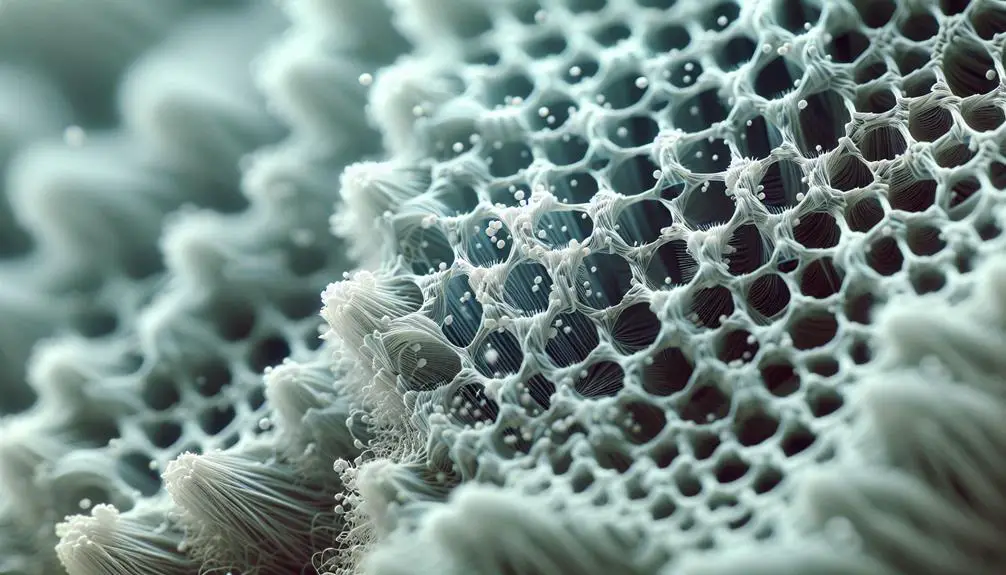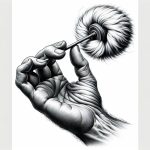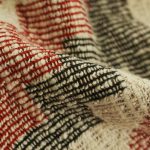When you think about breathable textiles, you might picture your favorite workout gear or a light summer shirt, but have you ever wondered how these fabrics actually manage to keep you cool and dry? It's not just about the material; it's also the intricate balance of air and moisture management that sets these textiles apart. By understanding the science behind materials like cotton, polyester, and merino wool, you'll see how advanced weaving techniques and moisture-wicking technologies come into play. Imagine the possibilities if you knew what makes your clothes perform so well, especially in those high-stress or hot environments.
Table of Contents
Key Takeaways
- Breathability: Breathable textiles allow air and moisture to pass through, facilitating sweat evaporation and temperature regulation.
- Moisture-Wicking Technology: Effective moisture-wicking results from fiber absorption rates and surface modification, enhancing comfort and performance.
- Porous Structure: A fabric's porous structure is crucial for airflow and ventilation, directly impacting comfort levels.
- Microfiber Innovations: Polyester or polyamide microfibers, with greater surface area, significantly improve moisture-wicking and temperature regulation.
- Advanced Weaving Techniques: Techniques like Jacquard and 3D weaving enhance breathability through superior air circulation and durability.
Understanding Breathability
To truly appreciate breathable fabrics, you need to understand what breathability means and how it affects your comfort.
Breathability refers to a fabric's ability to allow air and moisture to pass through it, ensuring optimal ventilation effectiveness. When you wear breathable fabrics, sweat evaporates more quickly, which greatly enhances your comfort levels.
The core of breathability lies in the fabric properties that facilitate this airflow. Fabrics with high ventilation effectiveness typically have a structure that permits air circulation, allowing your skin to breathe. This efficient airflow helps in regulating your body temperature, providing a cooling effect during intense activities or hot conditions.
Moreover, breathability is essential for effective sweat evaporation. When your body produces sweat, a breathable fabric allows it to move from your skin to the fabric's outer surface, where it can evaporate. This not only keeps you dry but also maintains your comfort levels by preventing the sticky, clammy feeling that non-breathable materials can cause.
Understanding these fabric properties and how they contribute to ventilation effectiveness and sweat evaporation gives you the knowledge to select fabrics that will keep you comfortable, no matter the conditions.
Key Materials Used
When choosing breathable fabrics, you'll often encounter key materials like cotton, polyester, and merino wool. Each of these materials has unique properties that cater to different needs and preferences. Cotton, for instance, is renowned for its softness and natural breathability. It's perfect for everyday wear, offering comfort and ease.
Polyester, on the other hand, is a synthetic fabric known for its durability and moisture management. When blended with other materials, polyester enhances the breathability and longevity of the textile. Nylon blends are another popular choice, especially in activewear, due to their exceptional strength and quick-drying capabilities.
Merino wool stands out for its natural temperature-regulating properties. It's lightweight, breathable, and can keep you warm even when wet. This makes it an excellent choice for outdoor activities in varying climates.
To help you understand better, here's a quick comparison:
| Material | Key Properties |
|---|---|
| Cotton | Soft, breathable, comfortable |
| Polyester | Durable, moisture management |
| Nylon Blends | Strong, quick-drying, flexible |
| Merino Wool | Temperature-regulating, lightweight |
Moisture-Wicking Technology
You're probably curious about how moisture-wicking technology keeps you dry.
It all starts with fiber absorption rates, which determine how quickly fabrics pull sweat away from your skin.
Then, evaporation efficiency mechanisms come into play, ensuring that moisture evaporates swiftly to keep you comfortable.
Fiber Absorption Rates
Understanding fiber absorption rates is important for appreciating how moisture-wicking technology keeps you dry and comfortable. When you consider a fabric's wetting behavior, the fiber diameter plays a significant role. Thinner fibers increase the surface area, allowing moisture to spread quickly and evenly. This rapid distribution helps prevent the uncomfortable sensation of wet, clingy fabric.
Surface modification enhances this process by altering the fiber's surface energy. High surface energy fibers attract moisture, while low surface energy fibers repel it. By engineering fibers with specific surface energy properties, manufacturers create textiles that pull moisture away from your skin and disperse it across the fabric. This technique guarantees that the moisture evaporates more efficiently, keeping you dry.
Additionally, the interplay between fiber absorption rates and fiber diameter is crucial. Finer fibers can absorb and transport moisture more effectively than thicker ones. This characteristic is why high-performance athletic wear often features microfibers. These tiny fibers not only enhance moisture wicking but also contribute to the fabric's overall breathability.
Evaporation Efficiency Mechanisms
Leveraging fiber absorption rates and surface modifications, moisture-wicking technology optimizes evaporation efficiency to keep you dry and comfortable. This technology works by enhancing the heat transfer and evaporation rates, which are essential for maintaining a stable microclimate around your body.
When you perspire, moisture-wicking fabrics effectively draw sweat away from your skin. This moisture movement is facilitated by the fiber structure designed specifically to transport liquid to the fabric's outer layers.
To master moisture-wicking technology, you need to understand how different fibers contribute to the process. Synthetic fibers like polyester and nylon are engineered with capillary action in mind, ensuring swift moisture movement. These fibers often feature hydrophilic treatments, further enhancing their ability to channel sweat away from the skin.
On the other hand, natural fibers like merino wool inherently possess moisture-wicking properties due to their unique fiber structure and ability to absorb moisture without feeling wet.
The efficiency of this mechanism guarantees that sweat evaporates quickly, aided by increased heat transfer from your body to the fabric. This not only keeps you dry but also helps regulate body temperature, making moisture-wicking textiles indispensable for athletic and everyday wear.
Airflow and Ventilation
When you think about breathable textiles, a fabric's porous structure is key to ensuring proper airflow and ventilation. This structure not only promotes air circulation but also enhances moisture management, keeping you comfortable in various conditions.
You'll appreciate the difference when your clothes allow your skin to breathe and stay dry.
Fabric's Porous Structure
The porous framework of breathable textiles allows air to flow freely, improving ventilation and comfort. When you explore the science of breathable fabrics, you'll find that the porous design is essential. This design creates small gaps and channels within the material, enabling efficient airflow. These channels function much like ventilation systems, allowing fresh air to circulate while expelling heat and moisture.
By understanding the intricacies of fabric's porous structure, you can better appreciate how these textiles maintain ideal thermal conditions. Whether you're wearing athletic gear, outdoor clothing, or everyday attire, the enhanced airflow ensures you stay cool and comfortable. Here's a breakdown to illustrate how different fabrics utilize their porous structures:
| Fabric Type | Porous Design Characteristics |
|---|---|
| Mesh | Large, visible pores for maximum airflow |
| Microfiber | Tiny pores, balancing breathability and softness |
| Gore-Tex | Microporous membrane, blocks water but allows air |
| Cotton | Natural fibers with moderate porosity, good ventilation |
You can see that each fabric's unique porous structure plays an important role in its ventilation capabilities. By mastering the understanding of these designs, you'll make informed choices that enhance your comfort in various environments. With this knowledge, you're well-equipped to select textiles that provide superior airflow and ventilation.
Enhanced Moisture Management
Improved moisture control in breathable fabrics guarantees you stay dry and comfortable by effectively wicking away sweat and allowing for peak airflow. Sweat control is crucial, especially during intense physical activities.
Breathable textiles are engineered to pull moisture away from your skin, enabling it to evaporate quickly. This process not only keeps you dry but also helps regulate your body temperature, enhancing overall performance.
When it comes to hydration management, these fabrics excel. They handle moisture in a way that maintains an optimal balance, ensuring you don't feel drenched or overheated. The advanced materials used in these textiles are designed for superior airflow, which plays a vital role in ventilation.
By allowing air to circulate freely, they prevent the buildup of heat and moisture, creating a cooling effect that maximizes comfort and efficiency. The integration of micro-ventilation zones within the fabric structure ensures targeted breathability. These zones facilitate the rapid expulsion of excess moisture, providing you with a consistent, dry experience.
Mastering the use of breathable textiles means you'll enjoy better sweat control and hydration management, making them indispensable for both everyday wear and high-performance activities.
Microfiber Innovations
Advancements in microfiber technology are revolutionizing the way we experience breathable textiles. Imagine the power of fabric engineering at your fingertips, creating performance textiles that not only feel luxurious but also offer unmatched breathability.
Microfibers, with their incredibly fine diameters, allow for the construction of textiles that excel in moisture-wicking and temperature regulation. This means you stay dry and comfortable, whether you're scaling mountains or managing a busy day at the office.
In the world of material science, these textile innovations are nothing short of groundbreaking. Microfibers, often made from polyester or polyamide, are engineered to be exceptionally fine—thinner than a strand of silk. This fineness allows for a greater surface area, enhancing the fabric's ability to manage moisture. These properties are the result of meticulous research and development, aimed at pushing the boundaries of what textiles can achieve.
You'll find these advanced microfibers in a variety of applications, from athletic wear to high-end fashion, showcasing their versatility and performance. Embrace this new era of breathable textiles, where material science meets impeccable design, offering you comfort and functionality like never before.
Advanced Weaving Techniques
Cutting-edge weaving techniques are opening up new possibilities in the world of breathable textiles. By leveraging loom innovations and advanced textile engineering, you can create fabrics that offer superior breathability without compromising durability. Performance textiles are now designed to regulate temperature and manage moisture more effectively, thanks to these sophisticated weaving methods.
To truly appreciate the impact, you should consider the following key weaving techniques and their benefits:
| Weaving Technique | Benefits |
|---|---|
| Jacquard Weaving | Allows complex patterns and enhances fabric breathability |
| 3D Weaving | Creates multi-layered fabrics with improved performance characteristics |
| Spacer Fabrics | Provides a cushioning effect and superior air circulation |
Jacquard weaving, for instance, enables the creation of intricate patterns that enhance both aesthetics and functionality. 3D weaving takes it a step further by constructing multi-dimensional fabrics that excel in breathability and insulation. Spacer fabrics introduce a unique cushioning effect, promoting air circulation and comfort.
These innovations in loom technology and textile engineering are game-changers for anyone aiming to produce high-performance textiles. By mastering these techniques, you can push the boundaries of what's possible, crafting fabrics that meet the rigorous demands of modern consumers.
Latest Technological Advances
Technological innovations are revolutionizing the creation of breathable textiles, offering unprecedented levels of comfort and performance. You're entering an era where nanotechnology applications are transforming fabric at a molecular level. By integrating nanoparticles, manufacturers can enhance moisture-wicking properties, making your activewear more efficient at keeping you dry. These nanotechnology-driven improvements don't just boost breathability; they also contribute to sustainable solutions by extending the lifespan of your textiles, reducing waste.
Smart textiles are another groundbreaking advancement. Imagine clothing that adapts to your body's needs in real-time, monitoring temperature and moisture levels to provide ideal comfort. These future trends aren't just about comfort, though. They also offer advanced functionalities like embedded sensors that can communicate with your devices, making your garments a part of the Internet of Things (IoT).
Moreover, the push for sustainable solutions is leading to the development of eco-friendly breathable textiles. Innovations like biodegradable fibers and closed-loop recycling processes are becoming more mainstream, ensuring that your high-performance gear leaves a minimal environmental footprint. These cutting-edge technologies are setting new standards, making breathable textiles more effective, intelligent, and sustainable than ever before.
Real-World Applications
These innovations are already making a significant impact in various industries, from sportswear to medical textiles. In sportswear, breathable textiles enhance your performance by regulating body temperature and wicking away sweat, ensuring comfort during intense activities. You'll find that these advanced fabrics not only boost physical performance but also offer substantial health benefits by reducing the risk of skin irritations and overheating.
In the medical field, breathable textiles are revolutionizing patient care. Hospital gowns and bedding made from these materials improve patient comfort and hygiene, promoting quicker recovery times. You might appreciate how these fabrics can reduce the likelihood of pressure sores and infections, making hospital stays more bearable.
Moreover, the environmental impact of breathable textiles is significant. Sustainable practices in textile manufacturing, such as using recycled materials and sustainable fibers, are becoming the norm. When you choose products made from these textiles, you're supporting a shift towards greater sustainability in the industry. This not only helps reduce waste but also conserves resources, making a significant positive impact on our planet.
Incorporating breathable textiles into your life offers a dual advantage: enhanced comfort and health, coupled with a commitment to sustainability.
Frequently Asked Questions
How Do You Properly Care for Breathable Textiles to Maintain Their Functionality?
To maintain breathable textiles' functionality, follow washing instructions closely. For fabric maintenance, use gentle cycles and avoid fabric softeners. Proper care enhances moisture wicking and odor control, ensuring your garments perform at their best and last longer.
Are There Any Environmental Impacts Associated With Producing Breathable Textiles?
Have you ever considered how production methods impact sustainability? Producing breathable textiles often involves significant chemical usage and waste. It's important to investigate better waste management practices to reduce the environmental footprint of these materials.
Can Breathable Textiles Be Recycled or Are They Biodegradable?
You can recycle some breathable textiles, but it depends on the material. Check for recycling options specific to the fabric type. Many natural fibers are biodegradable, offering an eco-friendly alternative to synthetic ones.
What Are the Cost Differences Between Breathable and Non-Breathable Textiles?
Imagine comparing a luxury car to a basic model. You'll find cost differences between breathable and non-breathable textiles. Breathable ones often justify higher costs with performance benefits, though durability and comfort trade-offs might arise.
Are Breathable Textiles Suitable for People With Sensitive Skin or Allergies?
Yes, breathable textiles are suitable for people with sensitive skin or allergies. They minimize skin reactions and often come with dermatologist recommendations. Look for hypoallergenic options to guarantee the best comfort and safety for your skin.
- Kevlar Suppliers in Pune: Business Insights and Recommendations - June 21, 2025
- Kevlar Suppliers in Kolkata: A Comparative Shopping Guide - June 21, 2025
- Kevlar Suppliers in Delhi: Evaluating Local and Global Options - June 21, 2025






